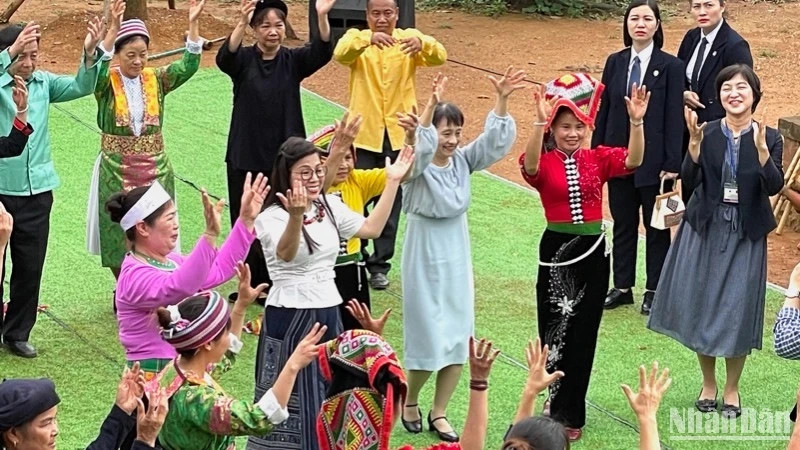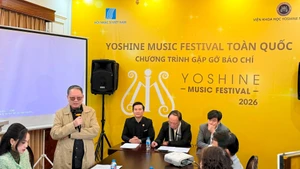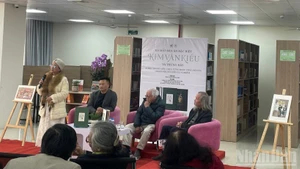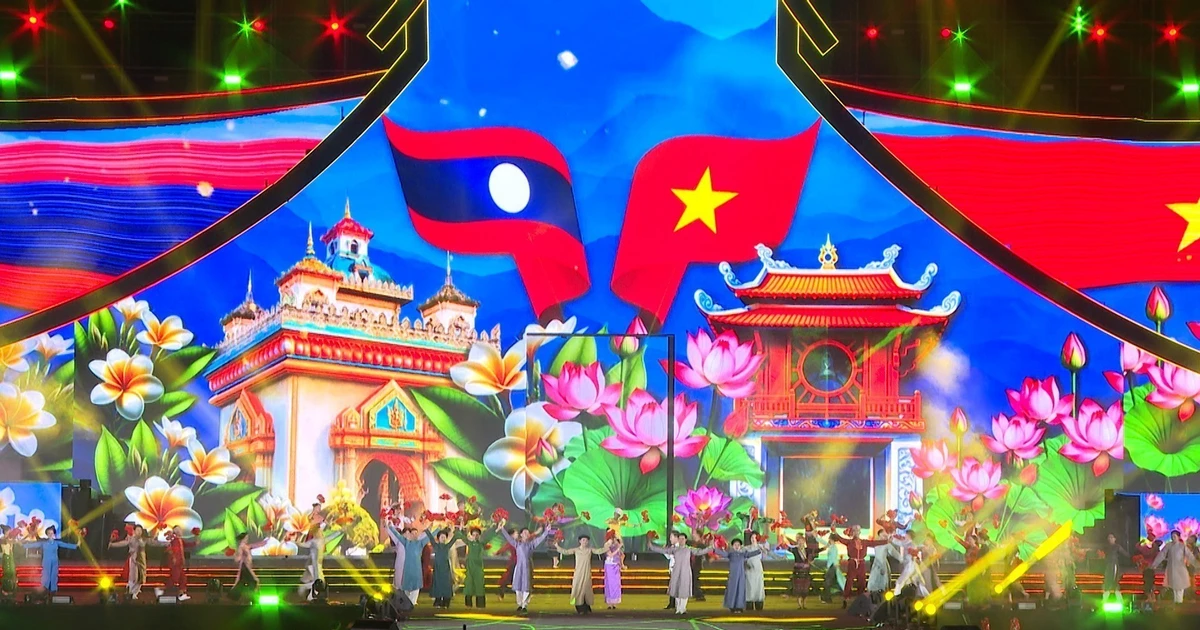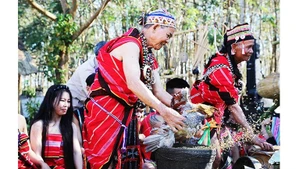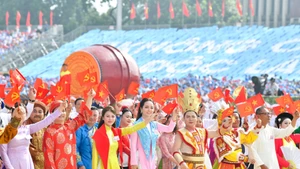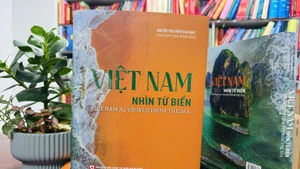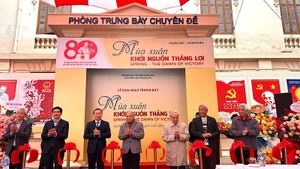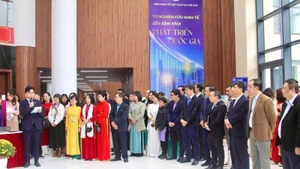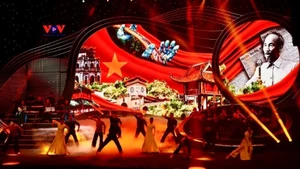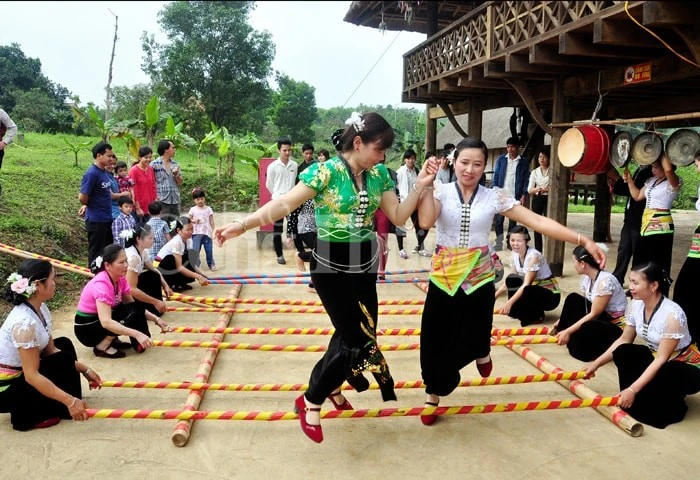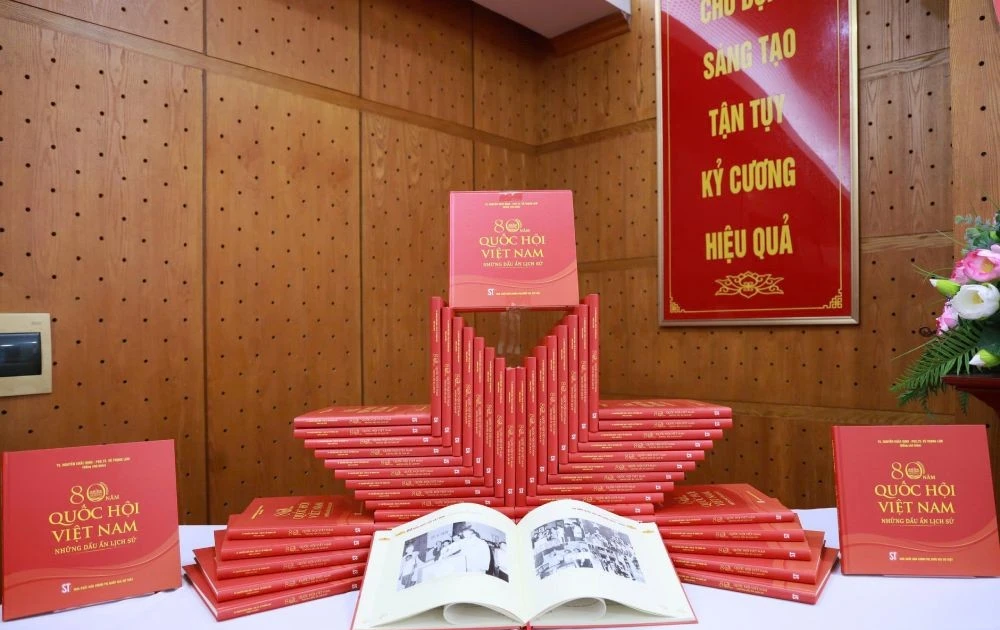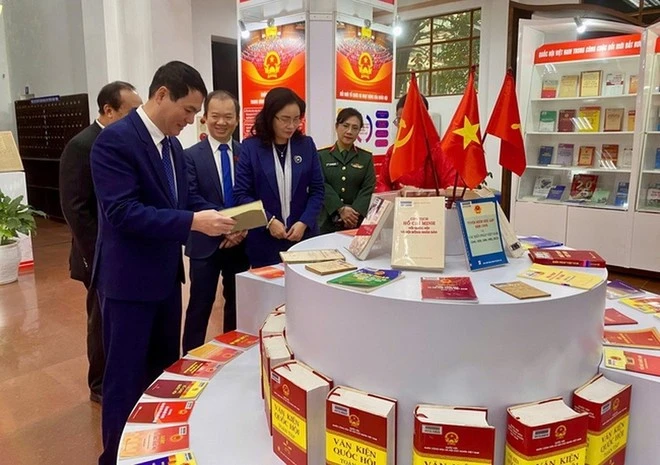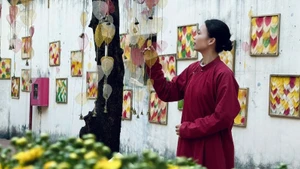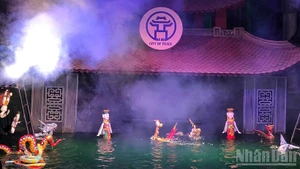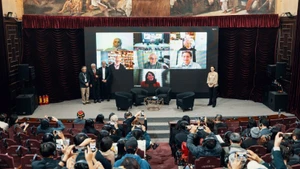These activities have contributed to promoting and spreading Vietnamese culture with a strong national identity and folk art has become a common language in the space of global cultural dialogue.
Not only are these activities symbolic, these events have uphold the value of folk culture as an ambassador, contributing to deepening Viet Nam’s cultural diplomacy in the era of integration.
When Thai Prime Minister Paetongtarn Shinawatra made a Dong Ho painting - a folk painting genre with a history of hundreds of years - it not only showed respect for Vietnamese cultural heritage but also opened up a space for traditional art exchanges with depth within the framework of diplomacy.
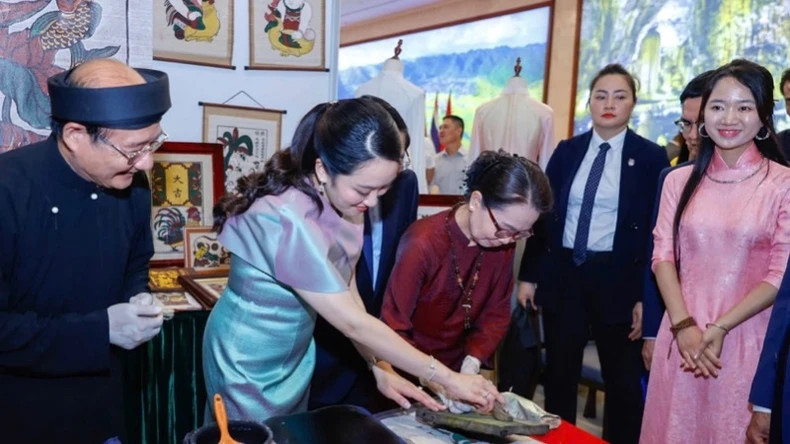 |
| Thai Prime Minister Paetongtarn Shinawatra experiences making Dong Ho folk paintings. |
Dong Ho folk paintings, Nam Cao silk products, green rice cakes, tea making art or folk games... are not only material products but also the crystallisation of indigenous knowledge preserved and inherited through many generations.
With its rustic and emotional beauty, folk culture opens up a space for gentle but profound exchange, from which culture is spread through experiential activities. A folk game, a traditional handicraft product, a folk song, a Northwest xoe dance... have conveyed the depth of cultural identity, contributing to building a humane, friendly and traditional national image. Each moment of cultural exchange is a bridge bringing Vietnamese identity closer to international friends, enriching understanding and sharing among ethnic groups.
It can be seen that culture is playing an increasingly important role in foreign policy. Cultural diplomacy is currently identified as one of the three pillars of Viet Nam’s comprehensive diplomacy, along with political diplomacy and economic diplomacy. With the ability to spread naturally, easily touching people’s hearts thanks to emotional factors and closeness, folk culture becomes a special material for organizing cultural diplomacy activities imbued with identity.
Without the need for large stages or elaborate rituals, a folk game, a folk song, a brocade fabric or a xoè dance is enough to tell a story with cultural depth and strong national spirit.
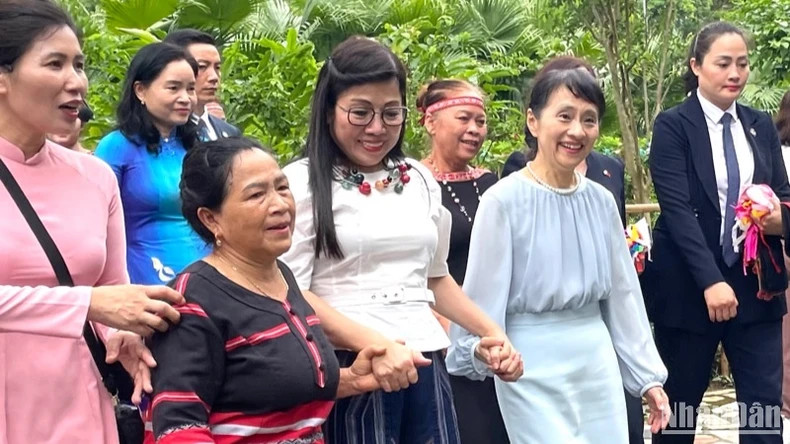 |
| Madame Le Thi Bich Tran and Madame Ishiba Yoshiko visit the Xo Dang ethnic village space. |
Viet Nam is a country with a huge treasure trove of folk culture, from games, rituals, folk songs, handicrafts to indigenous knowledge. Each element has the potential to become a “cultural ambassador” if carefully selected and organised in diplomatic events. High-level visits combining traditional cultural spaces, such as recent activities with Japan or Thailand... are clear evidence of the effectiveness of integrating folk culture in foreign affairs.
However, for each cultural space to become a natural “story” with context and emotion... requires careful and methodical preparation in terms of content, form and communication. More importantly, it is necessary to modernise the way of expression so that folk culture not only serves as a background for diplomatic activities but also becomes the focal point connecting Vietnamese identity with the world after the diplomatic event ends.
In the digital age, where the national image is increasingly spreading strongly, quickly and directly, the journey to turn folk culture into an ambassador in foreign affairs does not stop at reception events but needs to be developed into a long-term, systematic strategy, linking preservation, creation and promotion. Digitising folk paintings, folk songs, traditional games or ethnic rituals not only helps preserve but also increases the ability to reach international audiences.
Viet Nam needs to build a sustainable cultural value chain from preservation to creation, from tradition to integration so that each element of folk culture does not only live in the past but also becomes a strategic resource for the future. This is the way to protect and promote identity in the context of globalisation without losing the depth of indigenous culture.
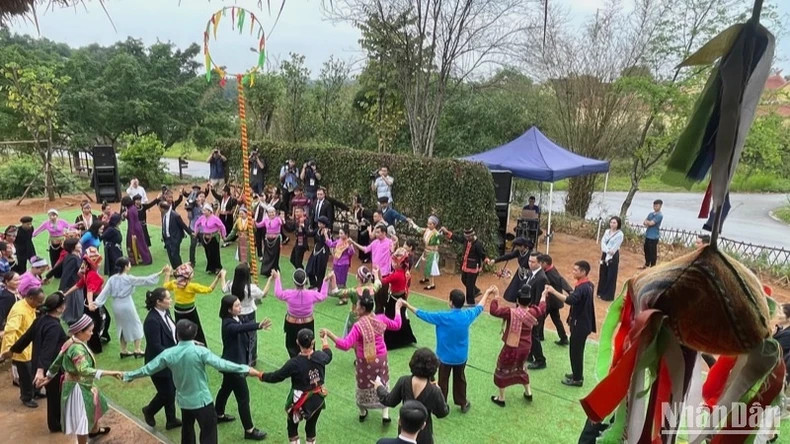 |
| Connecting through the Northwest xoe dance. |
From recent major diplomatic events, the cultural sector and localities, including artisans, creative communities and researchers, should study and create cultural spaces capable of “dialogue” with international friends with a clear direction: each cultural activity associated with foreign affairs must carry a message, an image and a story with depth. Models such as Dong Ho painting village welcoming international visitors, open museums introducing folk games, tours combining experiences of baking, making tea, weaving brocade, or ethnic art programs... are “windows” for the world to approach and understand more about Viet Nam.
Each element in the folk cultural treasure, when carefully selected and conveyed, and organised carefully and completely, not only brings deep emotions but also truly becomes a bridge to spread the image of Vietnamese national culture.
